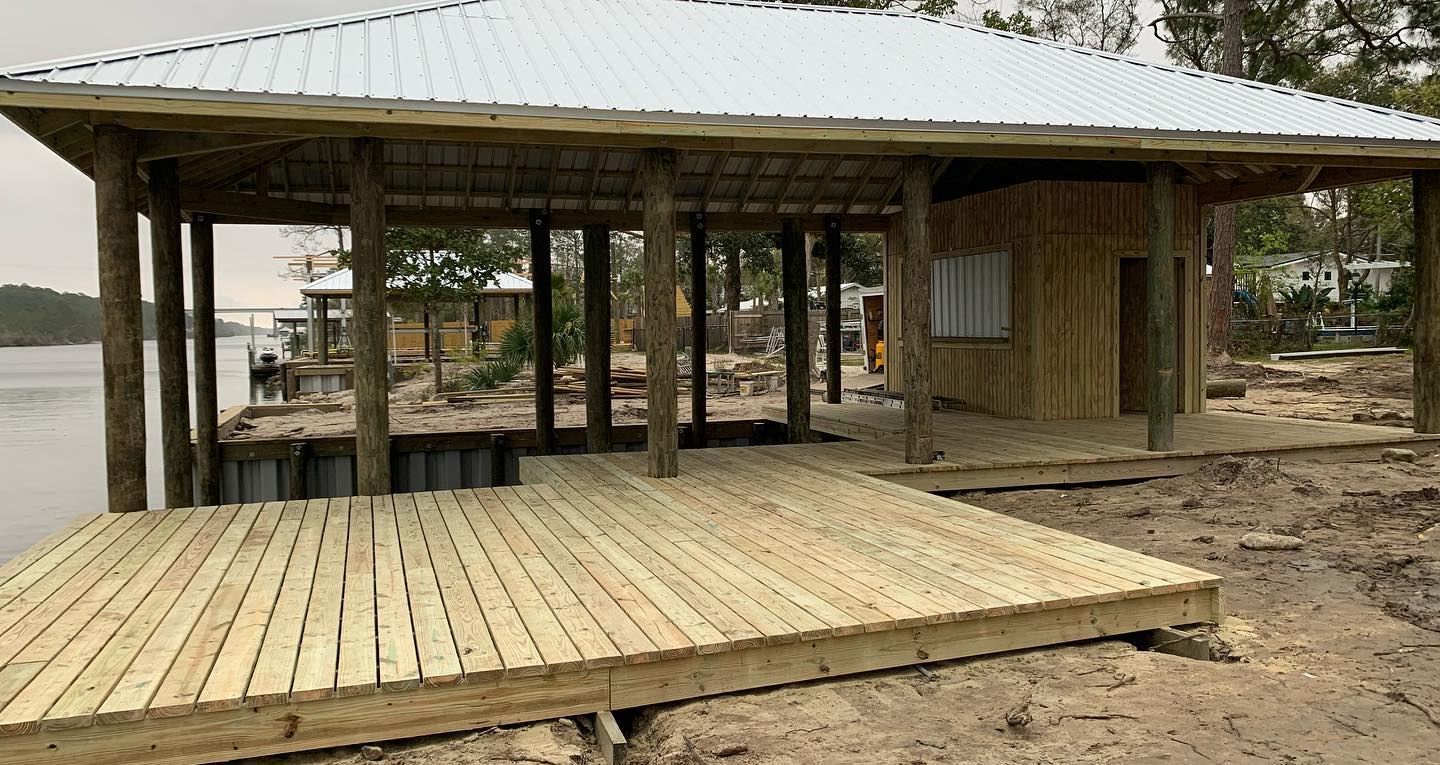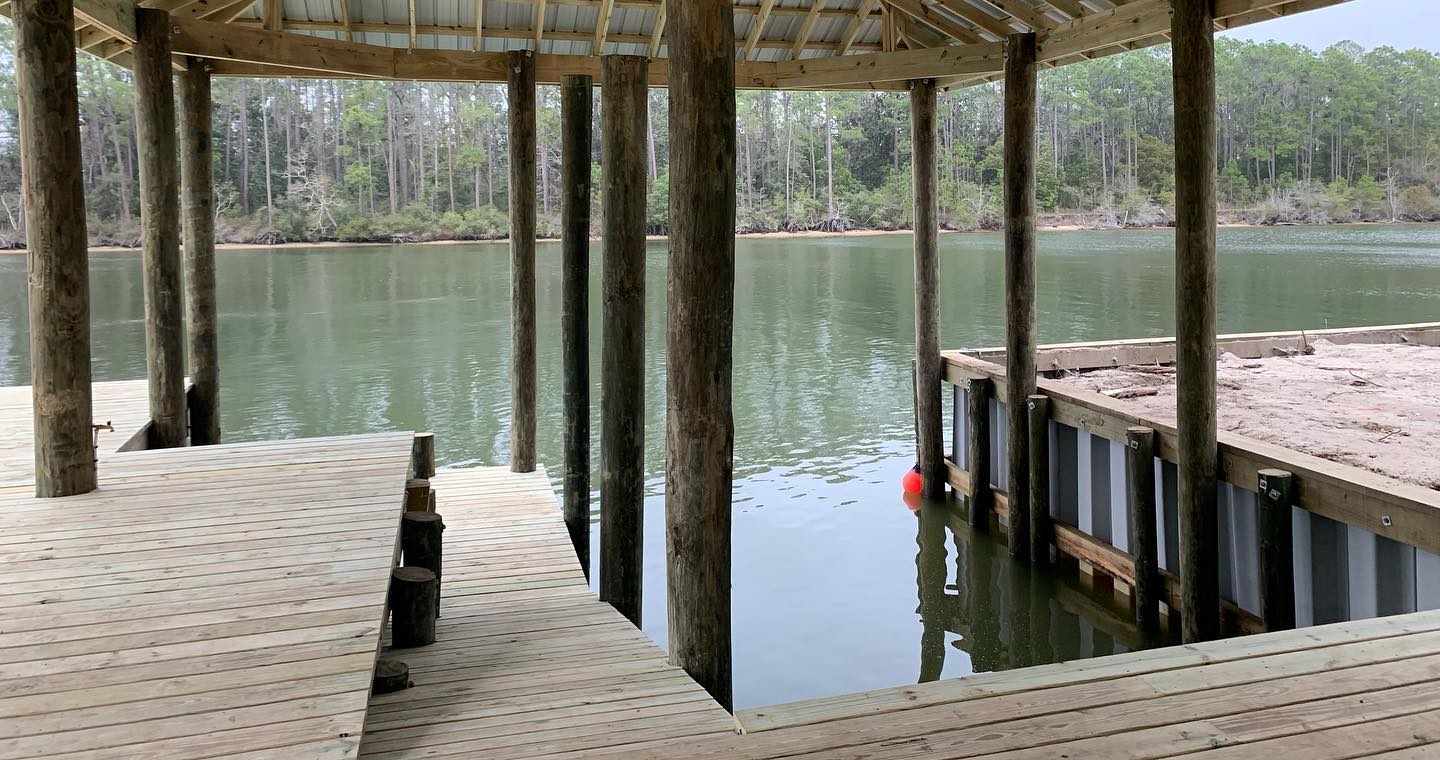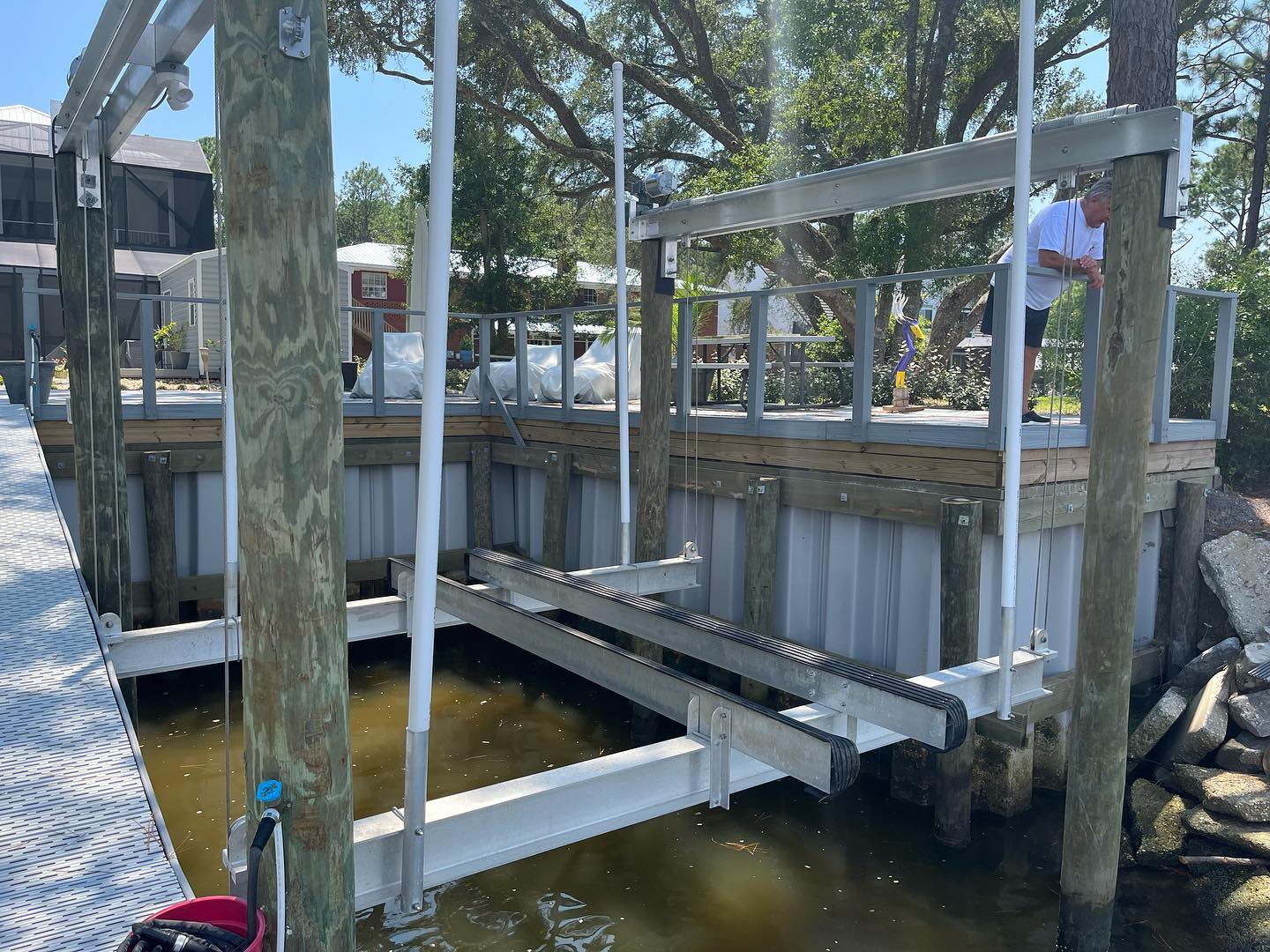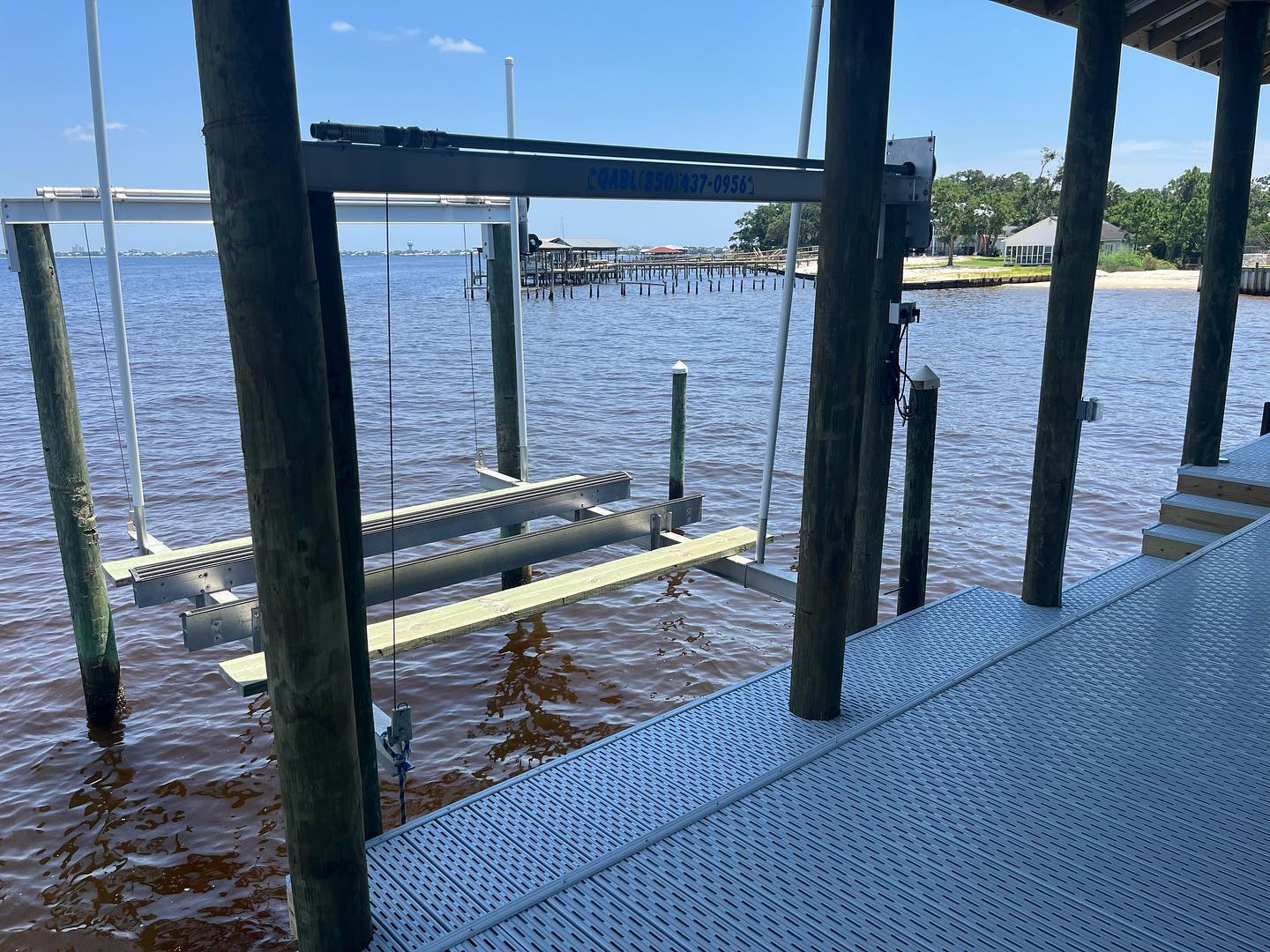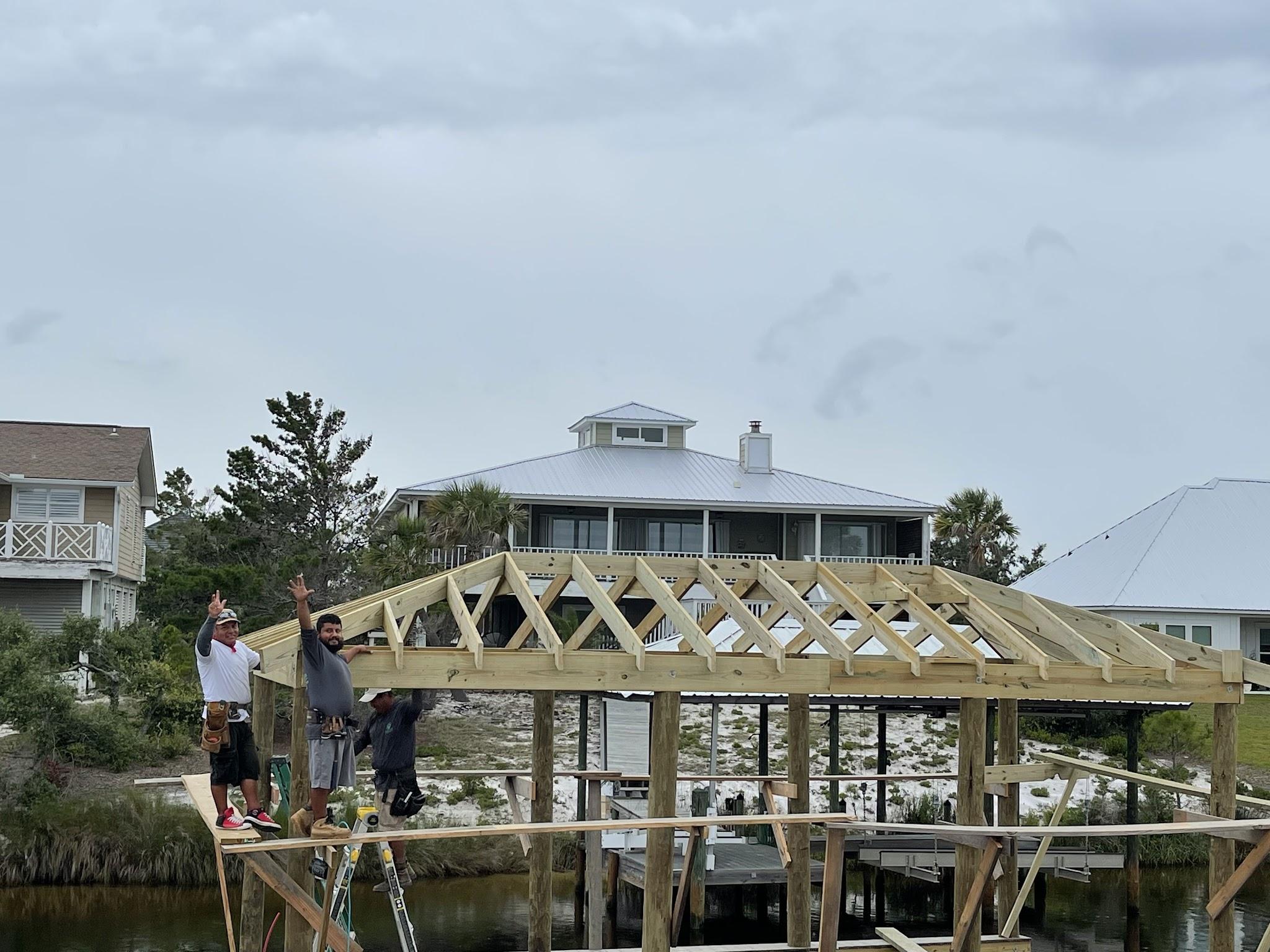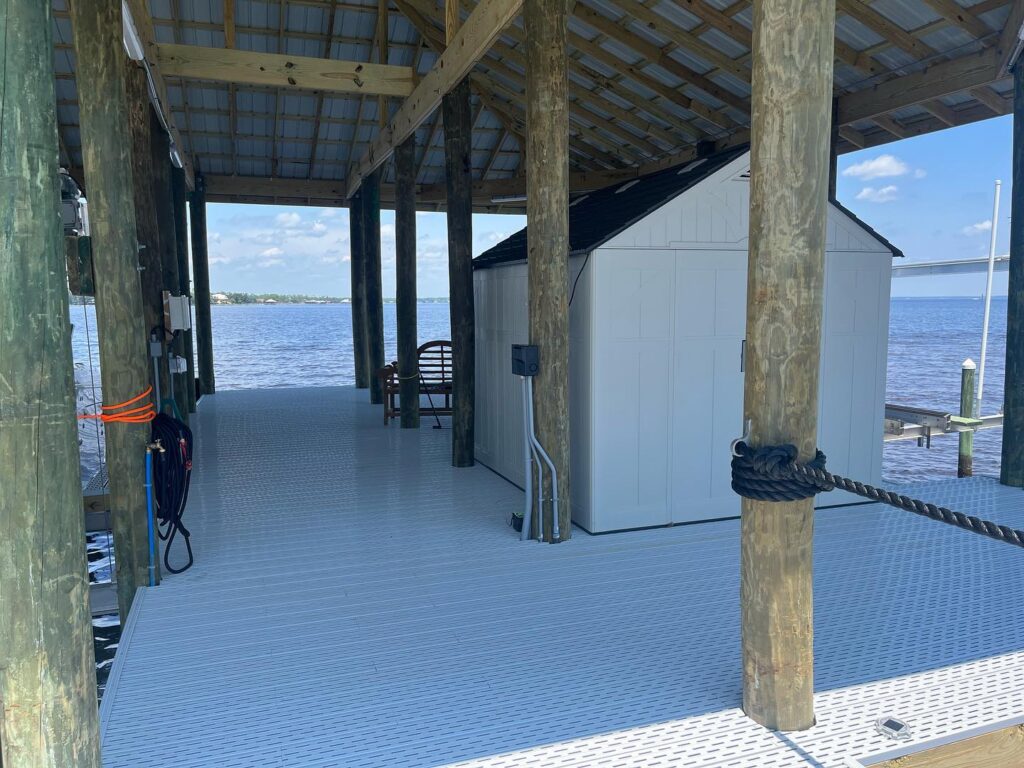Why Year-Round Maintenance Matters
Owning marine structures like docks, pilings, and seawalls means staying one step ahead of the natural elements. Saltwater, sun exposure, wave action, and weather shifts can all take a toll on your investment. Without consistent upkeep, even the highest-quality marine structures can deteriorate faster than expected. Year-round maintenance not only extends the lifespan of these assets but also ensures they remain safe, functional, and visually appealing. It’s not just about aesthetics—it’s about protecting your shoreline, your boats, and your property value.
Spring: Clean, Inspect, and Refresh
Spring is the ideal season for a full inspection and refresh after the wear and tear of winter. Start with a thorough cleaning to remove algae, salt, mildew, and debris buildup. A pressure washer is a great tool for this job, but be mindful of surface materials—especially composite boards or treated wood.
Once your dock or seawall is clean, check for signs of damage. For docks and pilings, look for warping, rot, rusted fasteners, or loose boards. With seawalls, inspect for cracks, soil loss behind the wall, or water seepage. Spring is also a smart time to reapply sealant or protective coatings to wood and metal surfaces to guard against UV rays and moisture.
This season is also when water levels begin to rise again, so it’s important to ensure your dock hardware is secure and adaptable for fluctuating conditions.
Summer: Stay Ahead of Sun and Storms
Summer may be boating season, but it’s also prime time for UV damage and the beginning of hurricane threats in coastal regions. Monitor your marine structures more frequently during this period, especially after major storms or high tides. Check that dock bumpers, ladders, and mooring cleats are firmly in place and haven’t loosened due to swelling or heat expansion.
For wooden structures, mid-summer is a good opportunity to apply a second coat of UV-protective sealant if fading is noticeable. Salt deposits should be rinsed off regularly, especially in areas with high boat traffic or splash zones. Inspect metal fasteners and connections for rust or corrosion and replace them as needed.
Also, make sure that storm preparations are in place. That includes removing loose items from the dock, reinforcing weak points, and making sure drainage systems near your seawall are clear to prevent backflow and flooding.
Fall: Prepare for Declining Temperatures and Storm Recovery
As the temperatures begin to drop and the boating season winds down, fall is the time for preventative maintenance and damage repair. If your area experienced strong summer storms or hurricanes, inspect all structures again for damage that may have gone unnoticed in the moment.
This is also when you should clean and store any seasonal items like dock furniture or accessories. Remove barnacle buildup, clean waterlines, and inspect the structural joints of your dock or deck to catch potential issues before they worsen in the winter.
Seawalls should be evaluated for new cracks or signs of shifting, especially if storm surges caused flooding. If soil erosion is present behind a seawall, you may need to repair or upgrade drainage systems or consult a marine contractor for reinforcement.
Fall is also an ideal time to perform deeper maintenance such as replacing pilings or re-decking if needed—weather is still mild enough to complete the work, and you’ll be ready to go next season without delays.
Winter: Protect and Monitor
Even if you don’t live in a region where water freezes, winter weather can still be harsh on marine structures. Freezing rain, strong winds, and lower water levels can expose parts of your dock or seawall to conditions they’re not normally built to withstand.
For cold-climate locations, it’s essential to remove or winterize floating docks, ladders, and utilities. For fixed docks, inspect above-water components and reinforce them if they’re susceptible to ice damage or extreme wind. In warmer climates, where use is year-round, monitor for shifting soil, rain damage, or wood rot due to increased moisture.
This is also the time to assess your erosion control methods. Are your drainage systems holding up? Do you see sediment washing away near your seawall? These issues are easier to address in winter while demand for marine construction services may be lower.
If you’re not visiting your property regularly, consider setting up a monitoring service or inspection schedule to ensure nothing slips through the cracks.
Materials Matter: Wood, Composite, Concrete, and Steel
Each material used in marine construction has different needs. Pressure-treated wood, while strong, is vulnerable to rot and UV damage. Composite boards resist warping and require less sealing but still need regular cleaning. Concrete, especially in seawalls, can crack or spall if exposed to saltwater without proper sealing. Steel hardware and supports can corrode without regular inspection and replacement.
Knowing your materials allows you to tailor your maintenance routine accordingly and avoid over- or under-maintaining certain components.
When to Call the Experts
Some repairs and upgrades are DIY-friendly, but many are best left to marine construction professionals. If you notice structural weaknesses, persistent erosion behind your seawall, or your dock feels unstable underfoot, don’t wait. Small issues can escalate quickly in a marine environment.
Professionals can also help with things like acid washing, pressure treating, installing erosion control systems, replacing pilings, and rebuilding aging infrastructure to modern code.
A seasonal check-up with a marine contractor—much like scheduling a home inspection—can give you peace of mind and help budget for long-term repairs before they become emergencies.
Year-Round Care Is the Key to Longevity
Marine structures are a major investment. Like anything exposed to the elements, they need consistent care to perform their best and last as long as possible. By approaching maintenance seasonally, you create a manageable routine that keeps your dock, seawall, and pilings strong, safe, and looking great.
It’s not just about protecting your property—it’s about creating a worry-free waterfront experience for years to come.


